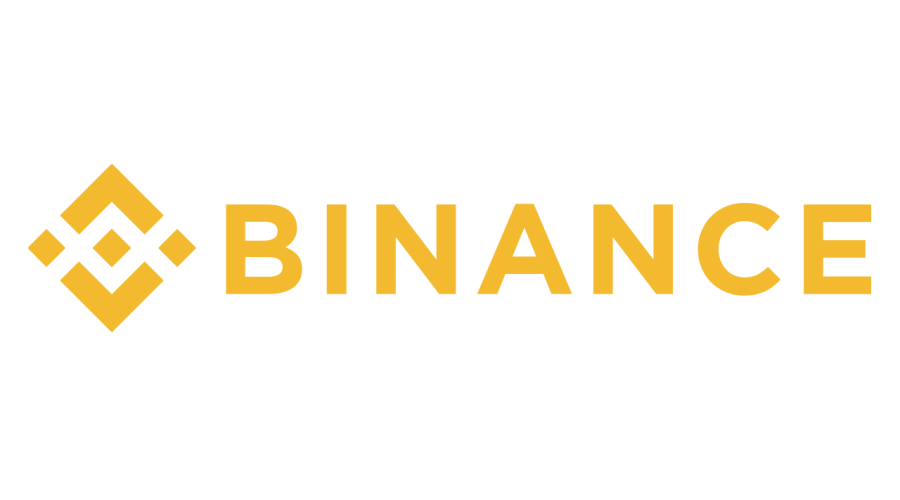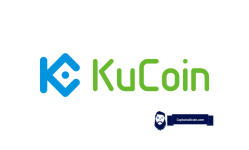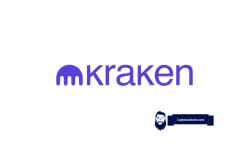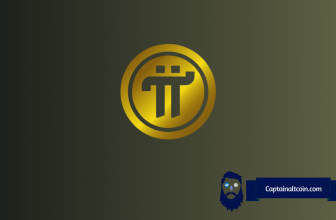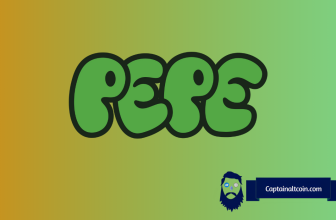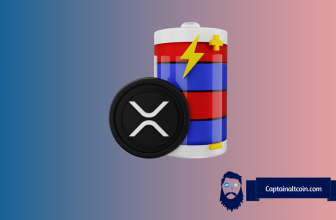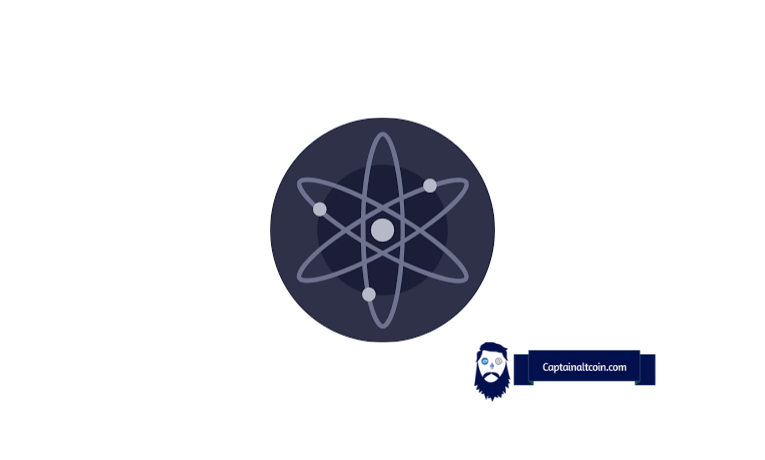
In this guide, we will voice our own and market’s opinion on Cosmos future while discussing ATOM price forecast for 2025 and beyond.
Please bear in mind that you should take this and any other prediction with a grain of salt since predicting anything is a thankless task, let alone predicting the future of a novel, highly volatile financial asset like Cosmos.
Now, let’s head into it.
Before we delve deep into the Iota price prediction and answer questions if Cosmos is a good investment or not, why will Cosmos succeed or fail or why will Cosmos price rise or drop, let’s quickly throw a glance at what is Cosmos and its to date history.
Our ATOM price forecast suggests the token price will be around $2.52 in the next 90 days.
👉 Cosmos Price Prediction 2025
We predict the Cosmos price to hover around $10.70 in 2025 based on our analysis.
👉 Cosmos Price Prediction 2026
In 2026, we expect the Cosmos price to be approximately $12.40 according to our price prediction model.
👉 Cosmos Price Prediction 2027
Our ATOM prediction indicates the token price will be in the vicinity of $15.61 in 2027.
👉 Cosmos Price Prediction 2028
For 2028, we forecast the ATOM price to be around $18.82 given current trends.
👉 Cosmos Price Prediction 2029
Looking ahead to 2029, we estimate the Cosmos price will settle around $22.03.
👉 Cosmos Price Prediction 2030
Our ATOM price prediction suggests a token price of about $23.01 by 2030 based on projected growth.
What you'll learn 👉
What is Cosmos
Cosmos markets itself as a decentralized network of independent parallel blockchains which are powered by Byzantine Fault Tolerant consensus algorithms like Tendermint. Byzantine Fault Tolerance is a feature of one blockchain’s consensus algorithm which makes it able to achieve consensus in a decentralized environment that could potentially contain malicious consensus verifying nodes in it.
These blockchains are capable of interoperating with eachother through the Cosmos Network, the so-called “Internet of Blockchains”. Also referred to as Cosmos Hub, it is the first blockchain launched within the Cosmos Network and its main task will be to interlink other blockchains (also known as zones) in the ecosystem. Tokens can be transferred from one zone to another securely and quickly with the help of Cosmos Hub.
Cosmos Network will be built on top of three key parts:
- Tendermint Core – Connects the networking and the consensus layer of the protocol under a software implementation known as Tendermint Core. Contains the Tendermint BFT consensus algorithm and the IBC (interblockchain communication) protocol for hub/zone communication.
- Application Blockchain Interface (ABCI) – BFT replication of dapps in multiple programming languages. ABCI is language-agnostic and enables developers to build the application portion of their blockchain in any language. Is the connecting interface between Tendermint Core and Cosmos SDK.
- Cosmos SDK – Development resource also known as “Base Coin”. The primary purpose of the SDK is to reduce the complexities in building the ABCI for common blockchain functionality and allowing developers to focus on customizable applications within a standardized framework. Developers can take this basic frame that has built-in tokens, governance, staking – all the basic features required of a blockchain – and then add desired functionalities through plugins. Basically the application layer of Cosmos Network.
Tendermint Core is responsible for the consensus on the Cosmos Hub. Blockchains that are connected to the Hub maintain their own consensus sovereignty, without having to switch to Tendermint.
Developers can build their own blockchains and applications with the help of Cosmos SDK and run them on top of the Tendermint Core, only worrying about the application layer. ABCI uses a socket protocol to enable the consensus engine to manage application state running in another consensus process, making Cosmos able to support a wide variety of cryptocurrencies and scripting languages like those found in Bitcoin, Ethereum, ZeroCash, CryptoNote, and more.
About the Tendermint Algorithm
Tendermint, the underlying algorithm of Cosmos, is the first adaptation of Proof-of-Stake consensus derived from the Practical Byzantine Fault Tolerant (PBFT) algorithm introduced by Castro and Liskov in 1999, after a 30 year long research period. BFT-based PoS protocols pseudo-randomly assign a validator the right to propose new blocks during a multi-round voting process.
However, committing and finalizing blocks depends on a supermajority — in this case two thirds of the quorum — of all validators signing off on the proposed block. This may take several rounds, or polkas, before blocks become finalized. BFT systems can only tolerate up to a ⅓ of failures, where failures can include arbitrary or malicious behavior.
Some of the features of this algorithm:
- Provable liveness in partially synchronous network.
- Safety threshold: ⅓ of validators.
- Public/private chain compatible.
- Instant finality: 1–3 seconds depending on number of validators.
- Consistency-prioritizing.
- Consensus safety.
Cosmos’s proof of stake algorithm is a delegated one, meaning that it is organized in such a manner where stakers are split into two groups: validators and delegators. Delegators have the task of deciding which validators will get to take a part in the consensus; validators are there to be a part of the consensus, validate transactions and add new blocks to the chain.
The rewards these stakers gain are generally earned in the ATOM token but in future may also be earned in wrapped forms of alternative cryptocurrencies such as Bitcoin and Ethereum. If one of the nodes in this system starts operating in a malicious manner, it gets “slashed” from the network and its tokens are taken away.
Cosmos Price Prediction
Cosmos Price Prediction
Following the landmark approvals of Bitcoin ETFs in early 2024, there has been a surge in interest from both retail and institutional investors. This could be a game-changer for crypto. However, the market has just experienced its biggest crash in history. On February 2nd and 3rd of 2025, over $2.3 billion was liquidated, marking the largest market wipeout in recent years. Following this, March was not kind to crypto either. This caused Bitcoin\\\'s price to drop to the $80k range, while Ethereum plunged to around $1.5k. Other major altcoins like DOGE, XRP, and several top projects fell over 40%, creating the highest level of uncertainty in months. Despite the turmoil, ETFs remain live and actively trading, showing continued institutional interest. However, analysts are deeply divided on the market\'s next direction. Some believe the bull run is still intact, while others argue that Bitcoin already topped at $109K in January, signaling the start of a prolonged downtrend. With the regulatory landscape beginning to stabilize and provide clearer guidelines, crypto traders are hopeful that the market will recover. Still, macroeconomic factors such as Trump’s economic tensions with major trade partners are creating additional volatility. Bitcoin ETF approvals in early January last year set a positive tone for the market, but now, the focus has shifted toward whether Bitcoin will reclaim its highs or enter a deeper correction. The BTC halving and ETH ETF approvals are already behind us, and Ripple was fined $125 million by the SEC in a recent ruling. While XRP supporters see this as another step forward, the market remains fragile. The majority of investors, traders, and influencers had hoped for the peak of the bull run to come in mid-2025, driven by ETF approvals, historical post-halving rallies, and typical 4-year cycles. However, the recent crash has thrown these expectations into doubt. Last year’s hottest sectors—memecoins, RWA, and AI projects—must now navigate a more turbulent market environment.
ATOM Price Prediction For The Next 90 Days
Below is a tabular overview of how will ATOM develop in the short-term (for the next 90 days), according to our prediction model:
Essential tools you need to succeed in crypto
Wallets
Hardware wallets are the safest! Pick one of the three:
✔️Ledger Nano X
✔️Trezor
✔️CoolWallet Pro.
Tax Calculators
Don’t get in trouble with the government let these magic tools do all the heavy-lifting when it comes to your crypto taxes:
✔️Koinly
✔️Cointracking
✔️ZenLedger.
Trading Tools
A good charting tool is a must if you want to try yourself out as a day-trader. ✔️Tradingview is best known but
✔️Bitsgap
✔️Coinrule
✔️Cryptohopper
are also excellent plus they allow automated trading.
Cosmos Price Prediction 2025
The cryptocurrency market has shown promising signs for gains in the first few months of 2024, with Bitcoin leading the charge. BTC first saw an impressive gain, hitting a new ATH of around $73K in March, but then retraced during the summer. However, the BTC price again had a strong rally in late 2024 and hit an all-time high of over $109K in January this year. Total market capitalization is currently at around $2.50 trillion (it was around $1 trillion in June 2023).
Bitcoin halving happened in April last year, and historical data tells us the BTC price starts to rally 6-12 months after the halving, but we are not seeing that rally yet.
Despite the previous market optimism, the crypto market just suffered its biggest crash in history in early February this year with multiple crashes in March and April. Bitcoin dropped below $80k, while Ethereum fell below $2k Many altcoins plunged by over 50%.
CaptainAltcoin’s prediction model takes market sentiment into an account and reacts accordingly. Below is a month-by-month breakdown for the next 12 months:
ATOM Price Prediction 2026
Our prediction model sees ATOM reaching $10.70 in 2025.
What will ATOM be worth in 5 years?
The price of ATOM in 5 years could lie around $9.64, according to CaptainAltcoin’s prediction model.
Cosmos Price Prediction 2030 – 2040
What Cosmos will be worth in 2030?
Our forecasting model sees Cosmos reaching $26.75 in 2030.
What Cosmos will be worth in 2040?
Our forecasting model sees Cosmos reaching $53.51 in 2040.
Will Cosmos replace / surpass / overtake Bitcoin?
No, Cosmos will not replace or overtake BTC.
Can Cosmos reach $100?
Yes, Cosmos could reach $100 by the end of 2025.
Can Cosmos reach $1000?
Yes, it is possible that Cosmos can reach $1000 but only in a distanced future, after 2030.
Is Cosmos worth buying?
We are advocates of moderately risky investing – invest most of your crypto portfolio in BTC (50%); 35% in a basket of big cap coins and the rest in small projects with huge upside. So, in this context, Cosmos is worth buying.
Is Cosmos a good investment?
Cosmos is, just like all other cryptocurrencies, a risky investment. It does have higher probability of going up than down because of the good use case, well-designed tokenomics, active community and a solid team behind it.
How much will Cosmos be worth?
For the short-term future, it could reach $2.52. In the long-term (8-10 years), it could jump to $26.75 or even higher.
Why will Cosmos succeed and go up in price?
Cosmos has a good use case, well-designed tokenomics, active community and a solid team behind it. All of these are a prerequisite for success and that is why our prediction model sees Cosmos rising up to $26.75 in 2030.
Why will Cosmos fail and drop in price?
Crypto projects fail for various reasons. Some of the most common ones are: team goes rogue and abandons the project, regulators declare it illegal and press exchanges to delist it, lack of media attention, more successful competitors, lack of well designed marketing strategy, losing community support, potential vulnerability in the protocol, failing to achieve anticipated minimum developement activity on the protocol, failing to attract new developers to build on their platform.
How high will Cosmos go?
Our forecasting model sees Cosmos price exploding and reaching $53.51 in a distant future.
What is the short-term prediction for Cosmos?
Cosmos will reach $2.52 in the next 90 days, which is a 38.8% change over the current price which hovers around $4.12.
Can Cosmos make you a millionaire?
Yes, if you buy large enough sum of it. Do not expect to invest $100 and become a Cosmos millionaire. But 100x price explosions are a common sight in crypto, so a $10k investment in Cosmos could make you a millionaire.
Cosmos Price Prediction Today - What will be the price of Cosmos tomorrow?
Cosmos will hover around $4.26 tomorrow.
Can Cosmos explode?
No, Cosmos price will not explode and record 5-10x pumps; but grow more modestly with an increase of 53% in the next year.
What will be the price of Cosmos in 10 years?
Cosmos price in 10 years will hover between $26.75 and $53.51.
Cosmos Price Prediction 2023 - What will Cosmos be worth in 2023?
Cosmos will reach $7.08 in 2023, which is a 71.9% change over the current price.
Cosmos Price Prediction 2024 - What will Cosmos be worth in 2024?
Cosmos will reach $8.54 in 2024, which is a 107.57% change over the current price.
Cosmos Price Prediction 2026 - What will Cosmos be worth in 2026?
Cosmos will reach $12.40 in 2026, which is a 201.34% change over the current price.
Cosmos Price Prediction 2027 - What will Cosmos be worth in 2027?
Cosmos will reach $15.61 in 2027, which is a 279.34% change over the current price.
Cosmos Price Prediction 2028 - What will Cosmos be worth in 2028?
Cosmos will reach $18.82 in 2028, which is a 357.34% change over the current price.
Cosmos Price Prediction 2029 - What will Cosmos be worth in 2029?
Cosmos will reach $22.03 in 2029, which is a 435.34% change over the current price.
Cosmos Price Prediction 2050 - What will Cosmos be worth in 2050?
Cosmos will reach $81.87 in 2050, which is a 1889% change over the current price.
Read also:
- Uniswap Price Prediction | UNI Price Forecast
- Binance Coin Price Prediction | BNB Price Forecast
- Enjin Price Prediction | ENJ Price Forecast
- Cardano Price Prediction – ADA Price Forecast
- Bitcoin Price Prediction– Future Forecast For BTC Price
- Ethereum Price Prediction – Future Forecast For ETH Price
- Ripple’s XRP Price Prediction: Future Forecast for XRP Price
- Binance Coin (BNB) Price Prediction – Future Forecast For BNB Price
- Solana [SOL] Price Prediction
- Polkadot Price Prediction | DOT Forecast
- Avalanche Price Prediction | AVAX Forecast
- Dogecoin Price Prediction: Future Forecast for DOGE
Where and how to buy ATOM
This is how you can buy Cosmos (ATOM):
- Download a Cosmos Wallet (Parity Signer, Atomic Wallet, Guarda, Trust Wallet usw)
- Create your ATOM-Adress
- Find an exchange that lists ATOM (Binance, Kraken, Kucoin) and buy ATOM
- Transfer ATOM from the exchange to your wallet
Binance
If you are not happy with Binance or can’t use it for some reason, here are a couple of alternatives:
Cex.io lot of payment methods
That is how you buy Cosmos, in a nutshell.
Read also:
- How to buy Bitcoin anonymously
- How to buy Bitcoin with credit card
- How to buy Ethereum
- How to buy Ethereum with credit card
- How to buy Ripple
- How to buy Ripple in USA
- How to buy Litecoin with credit card
Cosmos Wallets
Cosmos is already integrated by some of the most popular crypto wallets like Trust Wallet, Guarda or Atomic Wallet. It also has integration with a hardware wallet like Ledger Nano X or S.
Read also:
- Elrond price prediction
- Avalanche price prediction
- Polkadot price prediction
- Aave price prediction
- Tron price prediction
- Cardano price prediction
- Ethereum price prediction
Summing it all up
Consider the individual risk of each crypto and start looking for red flags:
- guaranteed promises of large returns (protip: that’s a Ponzi)
- float allocations that give way too much to the founder
- vague whitepapers
- vague timelines
- no clear use case
- Github with no useful code and sparse activity
- a team that is difficult to find information on or even worse anonymous
While all cryptocurrencies are a risky investments but generally you can break down cryptos into “low” risk core, medium risk speculative and high risk speculative
- Low Risk Core – This is the exchange pairing cryptos and those that are well established. These are almost sure to be around in 5 years, and will recover after any bear market. Bitcoin, Litecoin and Ethereum are in this class of risk, and I would also argue Monero. Allocate most of your funds into this basket.
- Medium Risk Speculative – These would be cryptos which generally have at least some product and are reasonably established, but higher risk than Core. Things like Stellar, Cardano, BNB, NEO..etc.
- High Risk Speculative – This is anything created within the last few years, low caps, shillcoins, DeFi…etc. Most cryptos are in this category, most of them will be essentially worthless in 5 years. Invest a very small portion of your funds and only what you can afford to lose (and I truly mean it because there is a big chance you will lose it all).

